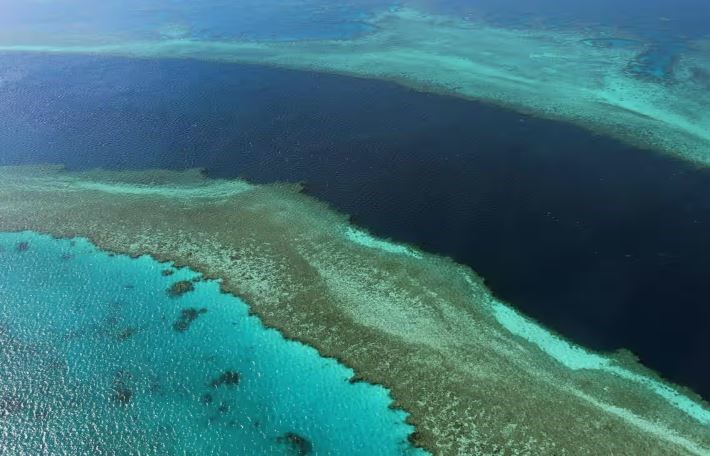Unprecedented marine heatwave expected to hit South-East Australia
A patch of the Tasman Sea could be at least 2.5°C above average from September to February, and it could get hotter.
-

A large area of ocean along the north-east Queensland coast is under heatwave conditions, raising concerns for the health of corals on the Great Barrier Reef and other ocean life. (AFP via Getty Images)
The southeastern region of Australia faces the potential of an unprecedented marine heatwave, surpassing the scale's upper limit and leading to significant repercussions in the fishing and aquaculture sectors.
The Bureau of Meteorology has projected that a section of the Tasman Sea off Tasmania and Victoria could experience temperatures at least 2.5°C above average from September to February, with the potential for even higher levels.
Oceanographer Grant Smith noted that the forecasted sea surface temperature anomalies have exceeded the scale's maximum threshold of 2.5°C, implying that it could potentially reach 3°C or 3.5°C.
South-eastern Australia has been identified as a climate change hotspot, with its waters warming approximately four times faster than the global average. The East Australian Current brings warm water south, compounded by rising atmospheric temperatures, contributing to accelerated warming.
In the past, the region faced its longest marine heatwave in 2016, lasting around 250 days, which severely impacted marine life. Abalone fisheries, salmon farming, and marine ecosystems experienced negative effects, including the spread of viral infections and the intrusion of new species.
The upcoming summer could yield similar consequences if the projected heatwave interacts with the coast. Impacts may include aquaculture disruption, the appearance of new species, and further challenges for kelp forests. For instance, Tasmania's giant kelp species have already lost 95% of their historical range.
Preparation strategies are being considered by various sectors. Salmon farmers might opt for early harvesting, improved water oxygenation, or adjusted feed mix. A forthcoming paper by Alistair Hobday from CSIRO aims to provide guidance on coping with the anticipated hotter and drier weather linked to the likely emergence of El Niño conditions after several wet and cool years in Australia.
Research led by Rich Little of CSIRO also examines how marine life in southeastern waters has transformed over the years. Comparing recent data with a 1990s marine survey, the study highlights shifts in species composition. Increased mackerel catches and a rise in seals and other marine mammals suggest changes in the ecosystem, possibly influenced by both the climate crisis and local factors.

 2 Min Read
2 Min Read









